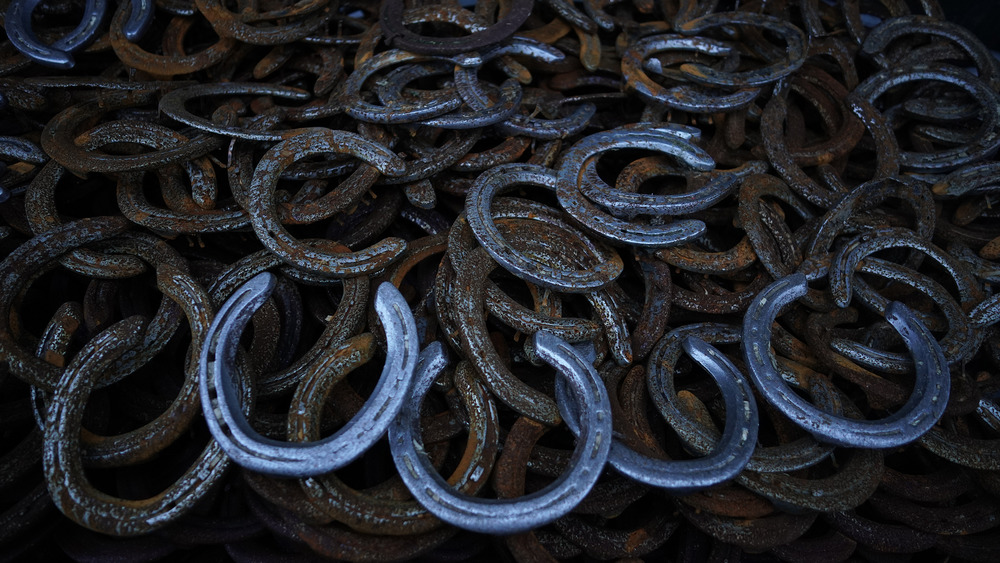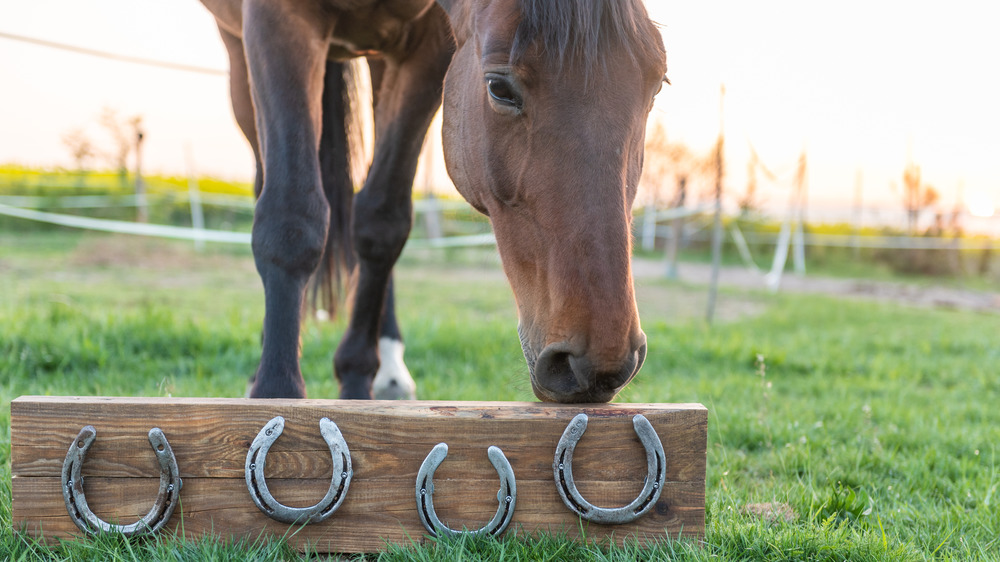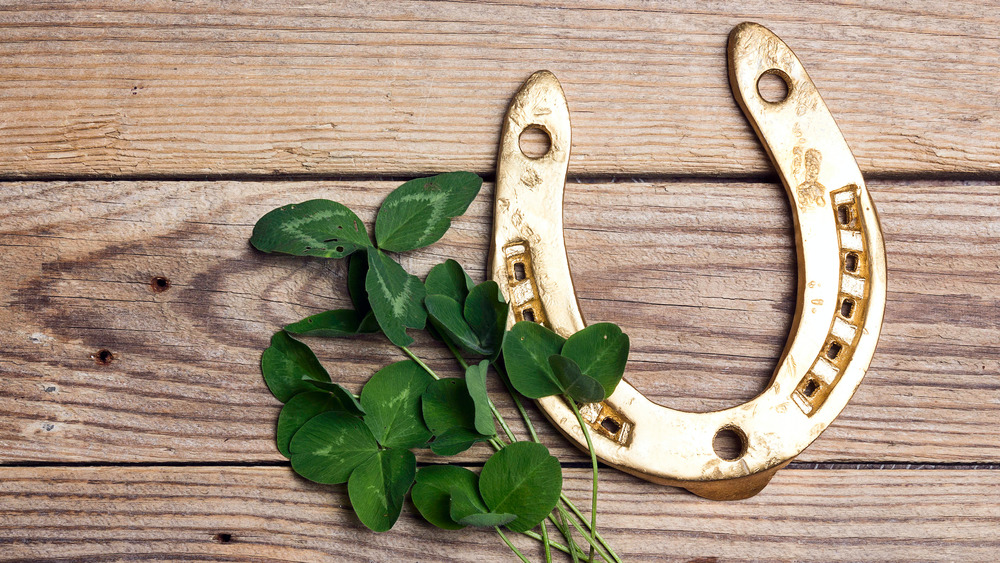The True History Of The Horseshoe
If you wanted to attract luck, people say you should nail a horseshoe on your wall. Of course, horseshoes were not invented so people can have good luck, but rather to protect horses' feet. The horseshoe is one of those inventions that came about because humans decided to ride the animal.
As soon as humanity learned to domesticate horses, horseshoes started to crop up. Horses' hooves are made of keratin that protects the delicate soft tissue inside. Prolonged activities can damage the foot, making it painful for the horse to walk. The earliest horseshoes were from 400 B.C. and were made from rawhide, scraps of leather, or plants, explained American Equus. These shoes basically wrapped around the hoof instead of needing to be nailed or glued on. The Romans called these shoes hipposandals. Some versions of hipposandals, particularly those from ancient Asia, even had therapeutic properties with plants that soothe the hoof. Encyclopedia Brittanica said hipposandals became indispensable, so much that the Roman poet Catullus mentioned a mule losing its shoe in the 1st century A.D.
The more humans started conquering other lands, especially in colder climates, the more important horseshoes became as dampness can soften the hoof. Northern Europeans then began crafting a metal horseshoe to help horses gain traction in the often slippery terrain. This metal shoe would be nailed to the hoof, closer to the horseshoes we know today.
Horseshoes gave the Union an advantage
The old metal horseshoes were often made of bronze, wrote Dressage Today, and only had six nail holes. Over time, the shoes had to be made of heavier material. People then started using iron for the horseshoes, despite the metal's high value. So, of course, horseshoes became essential commodities, and people sometimes paid debts in horseshoes rather than coins, which were also made of iron but had less value. During the 12th century, when countries participated in the Crusades, the pile of horseshoes collected for taxes were used in battles.
Superstitions around horseshoes, like nailing them to a wall for luck, also spread. By the 13th century, horseshoes were more readily available, and soon the art of nailing a horseshoe became a profession. Farriers, professional horseshoers, had thriving businesses, as did blacksmiths, who made the shoes. The importance of proper placement and attachment of horseshoes became popular when a book called No Foot, No Horse was written in England in 1751. Specialty horseshoes were also invented and allowed horses to do specific work in trade, transportation, or even battles.
And just like many things during the Industrial Revolution in the 1800s, horseshoes also became mass-produced. Industrialists invented machines that cast shoes on a large scale, with some devices capable of pushing out 60 shoes per hour. American Equus said mass-produced horseshoes even gave the Union Army great advantage during the Civil War as the horses performed better.
There's a ton of variety now with horseshoes
Putting shoes on horses made them faster. Even around the time of the Romans, horse racing had started becoming a huge sport. Of course, this meant that lightweight horseshoes were invented to make horses run even faster.
So, by the early 20th century, aluminum horseshoes became available and were designed specifically for racing. Other innovations, like a toe clip, were added to prevent horses from throwing their shoes off. Rubber pads also provided more traction and cushioning (via How to Dressage). These days, horse owners can choose from a variety of horseshoe designs to fit their animals. There are even horseshoes made of specialty metals like titanium, magnesium, and copper. A cheaper alternative would be to put on plastic horseshoes. Steel horseshoes are mainly used for more long-term wear, especially in sports like dressage or showjumping. Farriers still exist today, too. Some countries require farriers to get licenses, but in the United States, farriers don't need permits, though they do get certified by professional groups.
Because horses became such an essential help for human development, that's why horseshoes were developed: to keep horses safe while doing work for us. Though wild horses seem to do fine without them, domesticated horses do more work, carry heavier loads, and run faster for longer than their wild cousins. Also, though the shoes are nailed to their hooves, horses do not feel any pain from the process.


